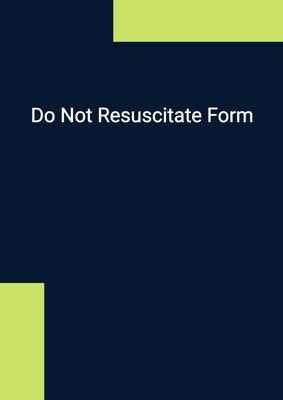How to Tailor the Document for Your Need?
01
Create Document
Click "Create Document" button and the document will be prepared with your account details automatically filled in.
02
Fill Information
Please fill in any additional information by following the step-by-step guide on the left hand side of the preview document and click the "Next" button.
03
Get Document
When you are done, click the "Get Document" button and you can download the document in Word or PDF format.
04
Review Document
Please review the document carefully and make any final modifications to ensure that the details are correct before publication / distribution.
Document Preview
Document Description
The document titled 'Advance Directives' is a legal document that allows an individual to express their personal wishes and preferences regarding their medical care and treatment in the event that they become terminally ill, in a persistent vegetative state, or in a state of irreversible coma. The document begins with a personal background section, where the individual provides their personal information, such as their full name, address, and date of birth. This section also states the purpose of the document, which is to minimize distress and spare medical advisers or relatives from making difficult decisions on the individual's behalf.
The document then provides definitions for key terms used throughout, such as 'artificial nutrition and hydration' and 'life-sustaining treatment.' These definitions ensure clarity and understanding when referring to these terms in the subsequent sections.
The document is divided into several sections, each addressing a specific medical condition or scenario. The first section focuses on the individual being terminally ill. It states that if the individual is diagnosed as terminally ill and unable to participate in decisions about their medical care, they have the option to either continue receiving life-sustaining treatments as recommended by the doctor or refuse such treatments. The specific treatments mentioned include cardiopulmonary resuscitation, artificial ventilation, blood products, pacemakers, vasopressors, specialized treatments for particular conditions, chemotherapy, dialysis, and antibiotics.
The second section addresses the individual being in a persistent vegetative state or a state of irreversible coma. Similar to the previous section, the individual has the choice to continue or refuse life-sustaining treatments. The treatments mentioned are the same as in the previous section.
The third section covers other end-stage irreversible life-limiting conditions that are not terminal illness, vegetative state, or coma. The individual has the same options as in the previous sections regarding life-sustaining treatments.
The document concludes with a declaration made by the individual in the presence of two witnesses. The witnesses must not be beneficiaries under the individual's will, any insurance policies, or any other instruments made by or on behalf of the individual. The witnesses attest to the voluntary nature of the directive and confirm that they have explained the nature and implications of making the directive to the individual. The witnesses then sign the document, along with the individual.
Overall, this document serves as a legally binding expression of an individual's wishes regarding their medical care and treatment in specific medical conditions or scenarios. It provides clarity and guidance for medical professionals and loved ones who may need to make decisions on the individual's behalf.
How to use this document?
Guidance for using the 'Advance Directives' document:
1. Gather personal information: Fill in the document with the individual's full name, address, and date of birth. This ensures accurate identification.
2. Understand the purpose: Familiarize yourself with the purpose of the document, which is to express personal wishes and spare others from making difficult decisions.
3. Define key terms: Review the definitions provided in the document for terms such as 'artificial nutrition and hydration' and 'life-sustaining treatment.' This will help in understanding the document's content.
4. Address terminally ill condition: If the individual becomes terminally ill and unable to participate in decisions, consider their preference regarding life-sustaining treatments. They may choose to continue or refuse specific treatments.
5. Address persistent vegetative state or irreversible coma: If the individual is in a persistent vegetative state or irreversible coma, determine their preference regarding life-sustaining treatments. They may choose to continue or refuse specific treatments.
6. Address other end-stage irreversible life-limiting conditions: If the individual has another end-stage irreversible life-limiting condition, assess their preference regarding life-sustaining treatments. They may choose to continue or refuse specific treatments.
7. Witness presence: Ensure that two witnesses, who are not beneficiaries, are present when the individual signs the document. One witness must be a registered medical practitioner.
8. Explain the nature and implications: The witness should explain to the individual the nature and implications of making the directive.
9. Witness signatures: Once the individual has signed the document, both witnesses should sign it as well, confirming their presence and understanding.
10. Revocation option: Inform the individual that they can revoke the advance directive at any time.
Note: This guidance provides a general overview. It is important to consult legal professionals or healthcare providers for specific advice and to ensure compliance with applicable laws and regulations.


























